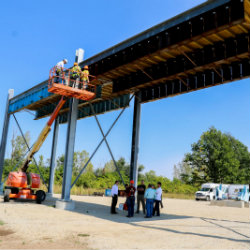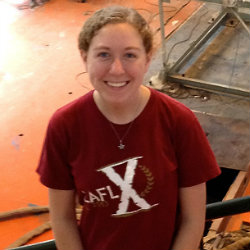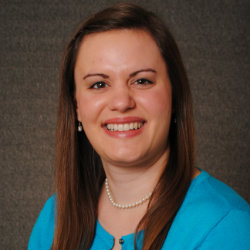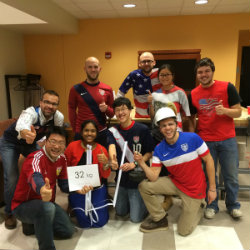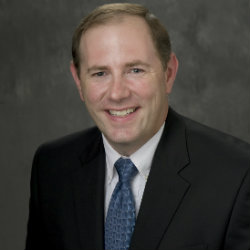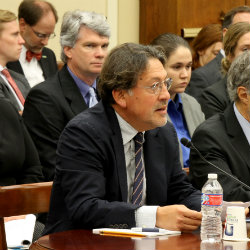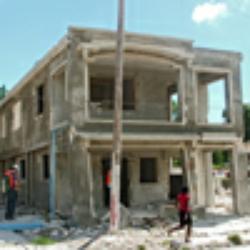Structural Engineering
What gives an engineer confidence to project and build something as large and graceful as the Golden Gate Bridge (the creation of late Purdue professor Charles A. Ellis) knowing that it has to withstand the demands of gravity, wind, and earthquakes?

The Golden Gate Bridge in San Francisco, California
Why did Gaudi think of the Sagrada Familia “upside-down” before he started building it?

The Sagrada Familia in Barcelona, Spain (inverted model on the left, actual structure on the right)
Who decides how much reinforcing steel goes into a reinforced concrete column supporting 100 floors in a skyscraper? And how do they make that decision?
How far apart can we place the supports of steel girders in our bridges?
If these questions spark your interest, if you would like to test to failure structural models in one of the largest laboratories in the country, then structural engineering is the right career choice for you. Join Purdue’s School Civil Engineering and enroll in structural engineering courses to leave a mark that will benefit and inspire many, and last the test of time as the Golden Gate has.
Spotlights
July 29, 2015
Down the road from the Bowen Laboratory and on a dirt path nestled in the woods, is a fenced-in area that houses the S-BRITE (Steel Bridge Research, Inspection, Training, and Engineering) center for civil engineering students.
June 9, 2015
A workshop was held at Bowen Laboratory June 7-8 to bring together an interdisciplinary group of experts in the area of data-driven modeling methods, especially those that focus on nonlinear system/model identification and damage detection to share experiences and foster opportunities.
April 17, 2015
Here is a quick look at the anticipated delivery of a 1937 truss bridge originating from Michigan. The trusses will be setup later this spring for use at Purdue University's Steel Bridge Research, Inspection, Training, and Engineering Center (S-BRITE) located outside of campus. The S-BRITE Center is under the direction of Associate Professor of Civil Engineering Robert Connor.
April 8, 2015
Civil Engineering undergraduate student Alana Wilbee was named a recipient of the prestigious National Science Foundation (NSF) Fellowship for the 2015 award year. Alana was selected for this honor among over 16,500 applicants.
April 8, 2015
Purdue Chi Epsilon Chapter President Emily Byl has been selected as one of two 2015 National Chi Epsilon Graduate Fellowship recipients.
March 27, 2015
Santiago Pujol, Associate Professor of Civil Engineering, was recently tapped for his insight into the sharing of big data for an article in Science News magazine.
March 20, 2015
On March 6, 2015, Good Morning America aired an investigation on bridge accidents. Footage was used that originated from Purdue University Associate Professor of Lyles School of Civil Engineering Robert Connor and his research with a web-based bridge monitoring interface. His research focused on a short-term monitoring solution for a more effective asset management tool used by bridge owners when inspecting critical onsite locations.
November 17, 2014
A team comprised of Purdue civil engineering students advised by Prof. Santiago Pujol emerged victorious in the 2014 International Bridge Contest. Purdue has won the contest four of the past five years.
October 22, 2014
Prof. Julio Ramirez will be inducted into the Department of Civil, Architectural and Environmental Engineering's Academy of Distinguished Alumni at the University of Texas at Austin on October 24, 2014.
October 8, 2014
Robert J. Frosch, professor of civil engineering and associate dean of resource planning and management, has been given the Arthur J. Boase Award from ACI, the American Concrete Institute.
September 9, 2014
Prof. Robert Frosch has been recognized by the American Concrete Institute with the ACI Committee 318 Structural Concrete Building Code Distinguished Service Award.
September 8, 2014
Robert Connor, associate professor of civil engineering, is giving students experience and insight in bridge inspections in part through immersive, interactive virtual environments being created by ITaP's Envision Center. Starting Thursday (Sept. 11), the center will present a series of fall seminars about visualizing, animating or employing virtual reality in research or teaching.
July 31, 2014
Purdue University earthquake engineer Julio Ramirez testified before Congress on Tuesday (July 29) as it debates reauthorizing legislation to reinstate federal research funding devoted to mitigating earthquake damage to the nation's infrastructure.
May 28, 2014
Students from Purdue's ASCE Seismic Design Team took part in the Earthquake Engineering Research Institute's Undergraduate Design Competition, July 21-25 in Anchorage, Alaska.
April 2, 2014
Purdue University Civil Engineering graduate students explained how large scale structural engineering testing is performed during a tour for Lebanon, Indiana junior high students in March 2014 at Bowen Laboratory.
January 17, 2014
Researchers and software developers at the Purdue-led George E. Brown Jr. Network for Earthquake Engineering Simulation (NEES) are building a data integration system that will allow seamless sharing of experimental data with earthquake engineers globally.
August 29, 2013
John F. Unsworth, P.Eng., Chief Engineer of the Canadian Pacific Railway, presented his lecture on Wednesday, Sep. 25th.
August 1, 2013
A new study has found that online tools, access to experimental data and other services provided through "cyberinfrastructure" are helping to accelerate progress in earthquake engineering and science.
August 1, 2013
Researchers have demonstrated the reliability and efficiency of "real-time hybrid simulation" for testing a type of powerful damping system that might be installed in buildings and bridges to reduce structural damage and injuries during earthquakes.
June 19, 2013
On May 20, 2013, engineering students from five universities vied for the sturdiest bridge design at the Seventh National Seismic Conference on Bridges & Highways (7NSC) in Oakland, California. The K'NEX Bridge Competition required the undergraduate teams to create designs for a bridge slated for inclusion in a new San Francisco Bay Area highway system.



